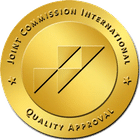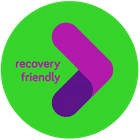Ketamine, once known primarily for its use as a dissociative anesthetic, has gained significant attention in recent years. This powerful drug has sparked interest in various fields, including psychiatry and neurology. It has even replaced many others as the go-to party drug of the 2020s.
Despite scientific advancements, we shouldn’t overlook the recreational use of ketamine and its associated risks. It is essential for individuals to approach ketamine use with caution and under the guidance of medical professionals. While ketamine therapy shows promise, alternative treatment options, such as traditional antidepressants and psychotherapeutic approaches, should also be considered based on individual needs and preferences. Ultimately, the full extent of ketamine’s potential and its role in modern medicine is yet to be fully understood, and further research and clinical experience will continue to shape its place in therapeutic practice.
At GateHouse Treatment, we aim to provide the best care for addiction patients. This goal involves thoroughly investigating any new popular drugs on the market, their effects, and their potential downsides. In this comprehensive article, we will delve into the multifaceted world of ketamine, exploring its rise in popularity, recreational use, potential dangers, developments in therapy, and alternative treatment options.
1. Ketamine’s Rise of Popularity
Ketamine, known as Ket or the outdated Special K, has been a legal anesthetic in the United States since the 1970s. It is typically sold as a white or off-white crystalline powder when used recreationally. Recently, the FDA approved its “off-label” use, meaning qualified clinicians can prescribe a drug to treat a condition different from its original purpose. In the past few years, it has seen an explosion in illegal use, with the number of pounds seized by authorities climbing over 1000% in 6 years.
Multiple factors drive the sudden popularity of ketamine. It’s come at the cost of other drugs. The risk of fentanyl-laced cocaine and MDMA (molly) leading to overdose and death has created an environment where many aren’t willing to consume them. Ketamine has become their replacement, an alternative considered safer by many.
This false sense of safety is due to where ketamine comes from. Most drugs come across the border or are made, mixed, and distributed by dealers. Ketamine is produced for medical use and then stolen from veterinary clinics and laboratories across the United States.
Paradoxically, the legal use of ketamine has fed into its illegal use, with the enthusiasm surrounding ketamine clinics and ketamine therapy driving interest. Some individuals believe they can self-medicate for depression and PTSD with the drug.
Additionally, ketamine’s unique effects, distinct from other recreational substances, can draw individuals seeking novel and alternative experiences. With its lower risk profile and lesser chance of death from respiratory overdose, the desire to break away from the mundane and traditional forms of recreation may drive some individuals to experiment with ketamine.
2. Recreational Ketamine Use
Recreational ketamine use involves taking higher doses than those prescribed for therapeutic purposes, often leading to euphoria, dissociation, and altered perceptions of time and space. Users may experience hallucinations, a sense of detachment from their bodies, and profound sedation.
At higher doses, the user will enter something called a “k-hole.” Although the experience can vary from person to person, some general characteristics exist. Users disconnect from reality as if observing themselves experiencing the world. Intense visual and auditory hallucinations accompany this disassociation, ranging from abstract colors to two-dimensional planes to dreamlike landscapes that defy all physical laws.
There is also a loss of taste, motor control, temperature, and general body awareness. Finally, emotions can vary wildly, from euphoria to intense fear and anxiety. Some people have emphasized euphoria; others have called it a “near-death experience” and a complete loss of self.
3. Dangers of Ketamine Use
While ketamine may have therapeutic potential, it is crucial to acknowledge the potential dangers associated with its use. One significant concern is the risk of addiction. Ketamine can be habit-forming, leading to psychological and physical dependence. Prolonged and excessive use can result in tolerance, meaning higher doses are needed to achieve the desired effects. Abrupt cessation or withdrawal from ketamine can lead to uncomfortable withdrawal symptoms.
Other risks of ketamine use include cognitive impairments, memory problems, and bladder toxicity. Chronic use of ketamine can cause damage to the urinary tract, leading to symptoms such as frequent urination, pain, and difficulty emptying the bladder. The substance’s purity, potency, and quality are uncertain when obtained from illicit sources, such as dealers. Adulteration with other substances is risky, increasing the potential for unexpected and harmful effects.
Finally, there is the risk of overdose, that although infrequent, rises with cross-drug abuse. Since ketamine is a party drug, it is often not taken alone. High doses can result in severe respiratory depression, loss of consciousness, and even death. The risk of overdose is exceptionally high when users combine ketamine with alcohol or opioids.
4. Developments in Ketamine Therapy
Ketamine’s therapeutic potential has led to significant developments in its clinical application. Ketamine infusion therapy, known as ketamine-assisted psychotherapy, has emerged as a novel treatment option for treatment-resistant depression and other mental health conditions.
During a ketamine infusion session, a controlled dose of ketamine is administered intravenously in a clinic or hospital setting under the supervision of medical professionals. The treatment typically consists of multiple sessions over a few weeks, each lasting around 40 minutes. Ketamine’s rapid-acting properties enable patients to experience immediate relief from symptoms.
There is also esketamine, an FDA-approved nasal spray self-administered by the patient under the supervision of a healthcare professional. Following administration, the individual is typically monitored for a specific period, usually around two hours, to ensure safety and observe for any potential immediate side effects or adverse reactions. Initially, it often involves twice weekly or weekly doses for a specified duration, decreasing frequency.
As you may have noticed, all uses of ketamine which are safe and approved occur under strict supervision by medical professionals. Individuals cannot self-medicate with ketamine because they cannot control for dose or purity or serve as neutral observers.
5. Ketamine Alternative Treatments
Ketamine research is still in its early stages, and the coming years will provide a clearer picture of its efficacy. Other alternatives include traditional antidepressants, such as selective serotonin reuptake inhibitors (SSRIs), serotonin-norepinephrine reuptake inhibitors (SNRIs), and tricyclic antidepressants (TCAs). These medications, though slower acting compared to ketamine, have been extensively studied and are effective for many individuals with depression and anxiety disorders. Innovative methods, such as transcranial magnetic stimulation (TMS), could be as effective and drug-free.
Furthermore, various psychotherapeutic approaches, such as cognitive-behavioral therapy (CBT), dialectical behavior therapy (DBT), and interpersonal therapy (IPT), can be highly effective in treating mental health conditions. These evidence-based therapies address underlying causes and teach coping mechanisms, providing long-term relief and improved well-being.
GateHouse Treatment Knows Ketamine
Although we understand that sometimes drugs may provide momentary relief, their continued and unsupervised use can only end in addiction and tragedy. If your ketamine use spirals out of control, don’t hesitate to reach out.
At GateHouse Treatment, we offer everything you need to get your life back on track. We have the tools to ensure holistic wellness and sobriety with outpatient, intensive outpatient, partial hospitalization, psychotherapy, medication-assisted treatment, biofeedback control, family therapy, and our partnered sober homes.
You don’t have to carry this burden alone. Call us at (855) 448-3588 for a free consultation. Reach out on our website to regain control of your life.
- Cymbalta Withdrawal: Causes, Symptoms, And Management - October 12, 2023
- Boredom in Recovery: 5 Tips to Avoid Relapse - October 6, 2023
- Overconfidence and Rehab: Avoiding Relapse - October 4, 2023




